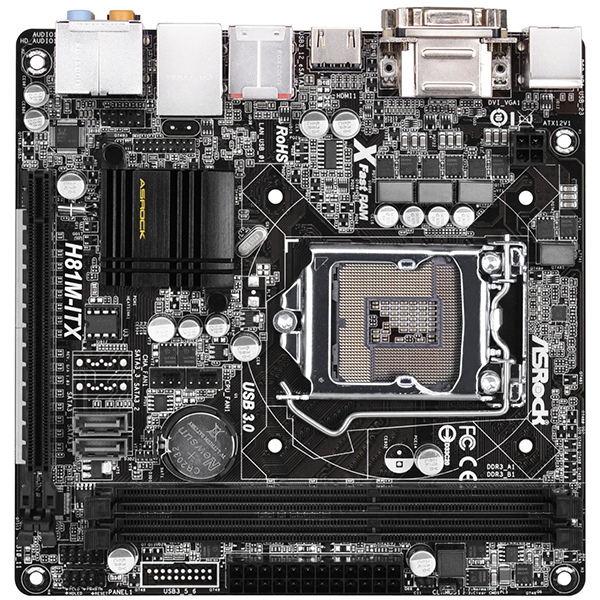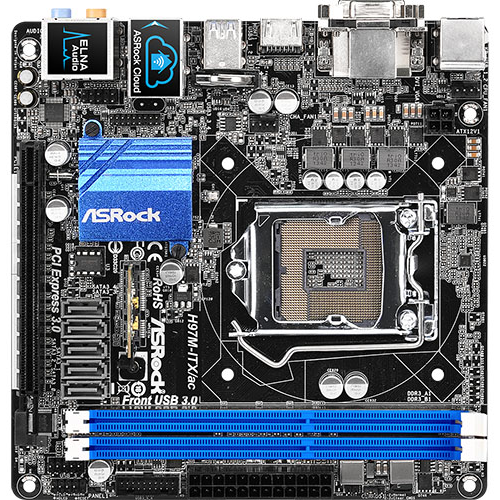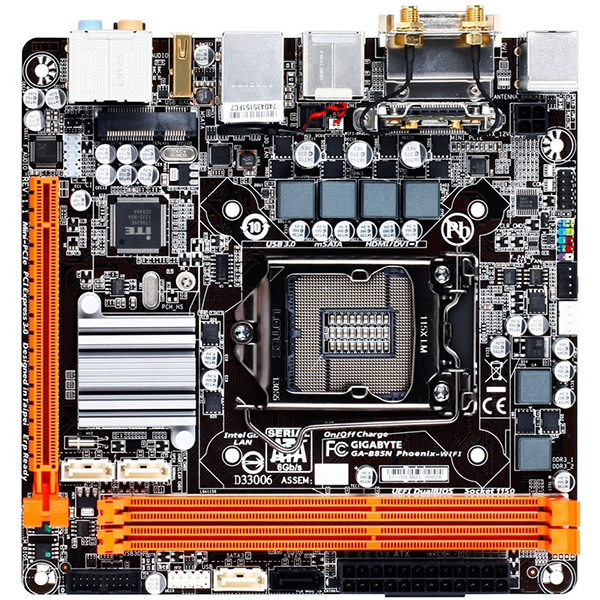Biostar Hi-Fi B85S3+ Motherboard Review
Why you can trust Tom's Hardware
How We Test
Test System Components
As before, this motherboard was set up on an open-bed test case. All components were the same as those used in recent write-ups.
Drivers & Settings
Stock and 4.2GHz overclock settings will be used to generate comparative data. I found only one anomaly, which was repeatable, otherwise the numbers were unremarkable. As usual, I used a Kill-A-Watt meter to read power usage at the wall. With the system off, the UPS on its own draws about 6 watts. I realize I may not have been perfectly clear what this means; for all boards, subtract 6W to get actual consumption of the test systems (although if you plan to use a UPS yourself, the added 6W may tell you what to expect).
Benchmark Suite
| PCMark 8 | Version: 2.3.293, Work, Home, and Creative Benchmarks |
|---|---|
| SiSoftware Sandra | Version: 2015.01.21.15, Memory Bandwidth |
| Crystal DiskMark 3.03 | Sequential Read |
| Unigine Heaven 4.0 | Version 4.0, Built-in Benchmark DirectX 9, Low Detail, 1280x720, 2xAA, No TessellationDirectX 11, High Quality, 1280x70, 0xAA |
Also as before, I ran only the sequential test in CrystalDiskMark, because I was interested in testing the chipset SATA and USB3.0 throughputs, not the attached drives. Similarly, I only looked for bandwidth differences in the RAM.
Comparison Motherboards
For comparison purposes, the results obtained will be examined against those from the original three-board mini-ITX review I wrote, and that you may read here.
Get Tom's Hardware's best news and in-depth reviews, straight to your inbox.
-
Sakkura Why no info on the fan control for case fans? Do the 3- pin headers allow voltage control, and if so, how does the BIOS handle fan curves?Reply -
SuperVeloce you're joking, right? Practically every motherboard that left the factory in Q1/Q2 2014, has the support for "haswell refresh" cpus.Reply -
Onus Reply
This is a good question. Although there are no case fans on my testbed case, there ought to be a way I can check for this in the future. I'll keep this in mind; thanks.16675885 said:Why no info on the fan control for case fans? Do the 3- pin headers allow voltage control, and if so, how does the BIOS handle fan curves?
-
Calculatron I think this is the motherboard that I said Biostar should have submitted for the sub-$60 LGA-1150 motherboard round-up, back in April.Reply
Better late than never, I suppose! -
Onus Since I was asked to look at the $60-$80 segment, I suspect this board was in that range when THG ordered it; the price may have come down some. It is a nice board, it would not have been unreasonable to make it "Recommended" rather than merely "Approved," although I suspect that one of the ASRock H97 boards may be close enough in price to make that a higher bang/buck proposition.Reply -
quilciri I remember back in 2011, with the Llano chips, if you overclocked them, the USB 3.0 controller would switch to USB 2.0 mode.Reply -
RedJaron Reply
I wouldn't have minded having it come across my bench back then. But I think Joe is right, it was probably just above the price range back then. This would have been tough competition for those other four boards, especially with the four RAM slots. That's something you get with a full-width board. That and a secured board edge ( I really don't like boards that are narrower than the spec and just hang off the edge ). Then again, the H81 chipset can't handle more than two DIMMs, even if you have the space. That's yet another advantage B85 has.16677526 said:I think this is the motherboard that I said Biostar should have submitted for the sub-$60 LGA-1150 motherboard round-up, back in April.
The lack of a TOSLINK doesn't bother me. The board does have the header if you want to buy the break out adapter. But if you don't have Dolby Digital Live or DTS-Connect, you can only get 5.1 audio over the S/PDIF from pre-encoded sources, like a movie DVD. Game sounds and every other generated audio is reduced to 2.0, which you can get from the 3.5mm jack. So unless you're using your computer to watch a lot of movies, and you're using fiber optic cables for audio instead of HDMI, there's not a lot of need for it. -
DonkeyOatie Reply16676133 said:you're joking, right? Practically every motherboard that left the factory in Q1/Q2 2014, has the support for "haswell refresh" cpus.
I wanted a definite statement. There are boards in distant parts of the world that lack this feature.
Firstly, apologies for not making my intention clearer. I knew exactly what I meant but, as a teacher, I should have been less hasty.
I advise a lot of people around the world on system builds as so many of us do. What often comes up for budget systems is the PCPartpicker note. – Some Intel B85 chipset motherboards may need a BIOS update prior to using Haswell Refresh CPUs.
Many of these posters are spending all the money they have on their first build and are full of FUD (Fear, Uncertainty, and Doubt) Often, nothing I can say will persuade them that they do not need a Z97 board like their mate told them to get.
My statement was intended to prompt the reviewer to add wording to the review similar to what SuperVeloce suggested. Say This motherboard supports haswell refresh cpus.
We regulars use this site a lot and 'know' all this stuff, but it is also important to remember the first-timers. -
beetlejuicegr He is right, DonkeyOatie i mean, i also built a system for a friend and i was stressed up until the system booted if i would have to run around to use another cpu to bios update so that the haswell refresh cpu i had would work.Reply


